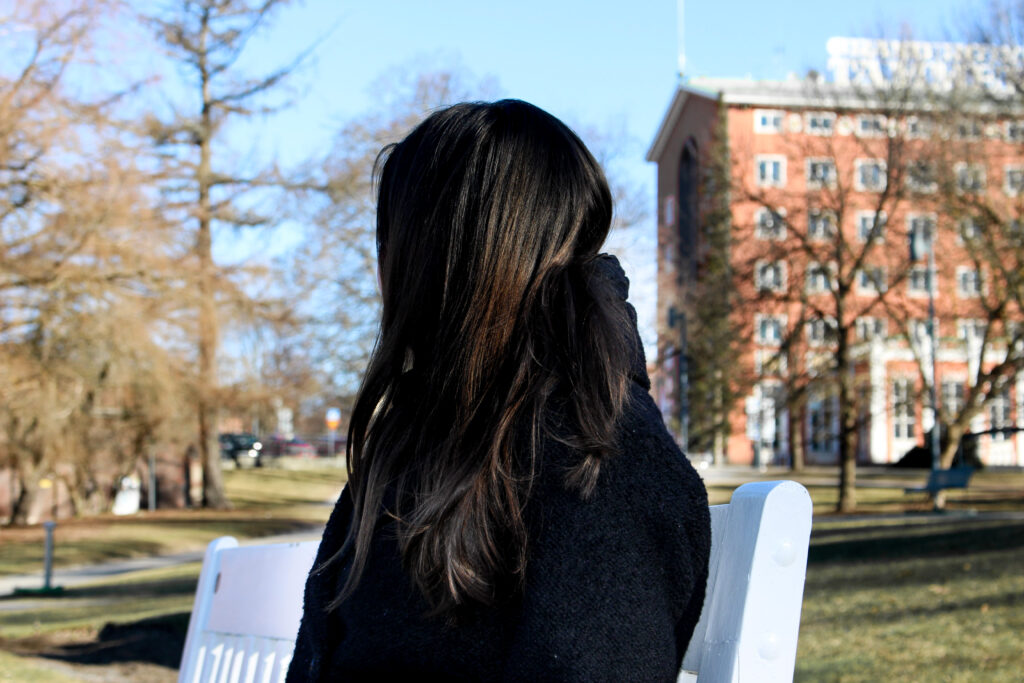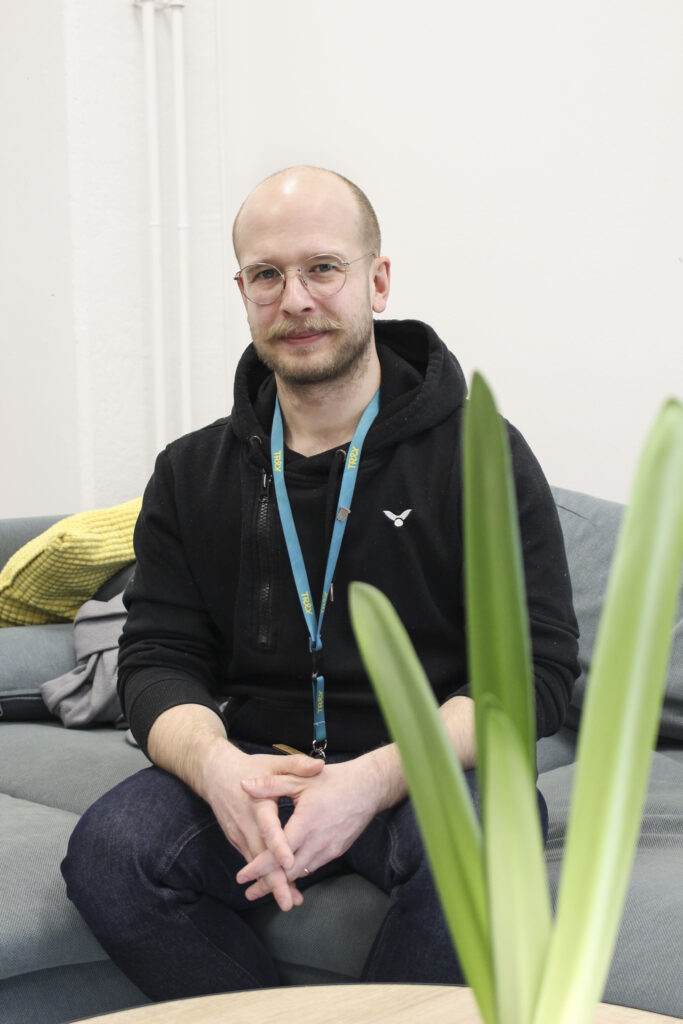Jessica experienced bullying while active in a subject association’s board – Bullying in higher education can resemble workplace bullying
Jessica was bullied when she was active in her subject association’s board. Bullying-related contacts have increased at Tampere University, but not all bullying will see the light of day.
Original text and pictures: Lenni Lehtonen
Translation: Isabel Lehtikallio

Bullying-related contacts are on the rise at Tampere University and other student unions. The interest in training for recognising and preventing bullying is also increasing.
“We have an increasing amount of student associations’ internal cases, such as boards’ internal issues resembling workplace bullying. Clearly, this is a growing phenomenon in all student unions”, says TREY’s harassment contact person, Yeti Ahonen-Kakko.
Visiiri interviewed Jessica who is one of the people who submitted answers to Visiiri’s bullying survey. She explains how she experienced bullying at Tampere University while active at her subject association’s board. Jessica does not use her real name in this article due to the topic’s sensitive nature, but her identity is known to Visiiri.
Even before we get the chance to buy coffees to start the interview, Jessica notes how bullying in higher education should be discussed more.
“When I was the target of bullying, I didn’t have the courage to talk about my experiences with a professional. That period was highly distressing, and I was scared of gaining a reputation as a difficult person and becoming an outsider to a further extent than I already was.”
The bullying Jessica experienced was complex – personal attacks sent through private messages and anonymous messages on anonymous discussion platforms such as Jodel. According to Jessica, the commentary on the Jodel discussions made it easy to identify her as the described person without her name even making an appearance.
Not all cases see the light of day
The discussion about bullying in higher education has advanced and is recognised more often. Cultural development toward adhering to the principles of safer spaces in recent years, can be seen to have had an effect on the phenomenon becoming more common, according to Yeti Ahonen-Kakko.
“Bullying and issues brewing in organisations are recognised better and more often intervened with.”
Ahonen-Kakko states that TREY does not have statistics on bullying cases because they would not be adequate.
“Each case is unique after all, so to kind of generalise for the sake of keeping statistics, doesn’t work in this context.”
Due to the missing statistics, it is difficult to define specifically how common bullying is at Tampere University. Along with increased contacts, TREY has recognised other signs of bullying cases surfacing alongside organisation or association level issues: they receive more diverse training requests than TREY has the possibility to conduct resource wise.
“We’re training associations more and more related to these themes, and we’ve already held 33 training sessions this year. In addition to association trainings, we organise training concerning the wellbeing of board members, for example,” Ahonen-Kakko explains.
The harassment contact persons also receive direct training invitations in which the subject associations request them to train the boards.
“Well, if we accepted one, then the same opportunity would have to be offered to all subject associations, which there are over 160.”
Ahonen-Kakko estimates that while contacts concerning bullying are on the rise, not all bullying will ever see the light of day.
“We have more bullying and harassment in our community than will ever be known by anyone, but there’s nothing we can do. If no one speaks out, then it cannot be known.”

Anonymous and personal bullying
In Jessica’s experience, board work at subject associations and especially the anonymous critique of the board’s work on different communication platforms, create an easy predispose for bullying. Sometimes the bullying may be personified by one or multiple bullies.
“One example of this is from the year when I acted as my subject association’s performance auditor. That year, I made an entry on the subject association’s communications and its schedules in the performance auditor’s report. It stated that the subject association’s official communications might be best done during daytime and not during the late evening hours.”
Jessica says that the purpose of the entry was to communicate that the membership is more active during the daytime and that communication organisers would not need to lose sleep if communications were done outside the evening hours.
According to Jessica, the entry was approved through gritted teeth.
“But then, one time I sent a general question to the subject association’s board through a general members group chat in the evening. The thought was that someone from the board would respond when they have the time for it.
Instead, what followed was a flood of inappropriate private messages to Jessica.
“I received multiple private messages, saying ‘Shouldn’t you now be following your own instructions, which you’ve given?’ It was pretty much a direct attack.”
After one year as a performance auditor, Jessica had agreed to perform as an auditor in the following year.
“But after that situation, I thought, no. I resigned from the position because a performance auditor’s job is thankless as is, and on top of it, I would’ve had to endure a lot more.”
Jessica says she told the subject association’s then Chair directly that her reason for resigning was the repeated attacks and inappropriate messages from the board members she had received.
“I don’t know if the matter or communication culture were dealt with in the subject association.”
Not an individual subject association’s issue
Jessica describes her subject association’s board activity’s atmosphere as stifling which in turn may increase the risk of inappropriate behaviour.
“The consensus was ‘in for a penny, in for a pound’. As if receiving a colossal amount of anonymous criticism is just part of the deal. The message to new board members was just, well, now you’ll see what board activity is like and just hang on tight.”
She says that upon change of the board term, only one board member continued the following year because to others the board work had been, contradictory to expectations, disappointing.
“I just find it astonishing that you’re rewarded with crap when you’re doing voluntary work for the good of the community.”
Jessica has knowledge that bullying in higher education is not an issue in her subject association alone.
“It’s hasn’t been long since I discussed with a friend who’s a member of a different subject association. They have a situation in their subject association where a person who has done a tremendous amount of association work for many years has systematically been left without the association’s honorary badge throughout the years.”
“Finally, the subject association’s board had admitted that one board member had been so strongly disapproving of giving them the honorary badge, for personal reasons, that others had been too afraid to defy them.”
Although Jessica has moved onto the working life after studies the difficult years in the subject association’s board come back from time to time.
“To this day, internal thoughts are popping up if I was too sensitive or was it all [the bullying] somehow justified as I was on the board after all. It’s contradictory, as rationally I know that, of course, it wasn’t.”
Conversations and commentary by faceless cliques
Bullying and harassment can be, according to Ahonen-Kakko, overlapping phenomena. As an example, he gives the conversational culture inside cliques or a conflict situation.
“Conversations conducted in cliques and common matters discussed on platforms where it shouldn’t be done is a key element of harassment. It’s also common outside of the higher education community.”

The ease of anonymity, challenges in group dynamics and inexperience in subject associational work are risks for bullying to become more common. These risks have been recognised and identified by TREY, and harassment contact persons call continuous attention to their activity, Ahonen-Kakko states. This spring, TREY’s harassment contact persons have piloted walk-in appointments where the harassment contact persons hold appointments at the campuses’ Navigaattori spaces.
“We wish that by being present, we could lower the contact threshold. Additionally, the harassment contact persons’ posters are on all campuses and at most subject associations’ facilities, which is a wonderful thing”, says Ahonen-Kakko.
According to him, the contact information for harassment contact persons are annually included in the Fresher’s Guide. To his knowledge the contact information is also often available in subject associations’ internal communication channels.
Jessica also wants to encourage those encountering bullying to contact health services or TREY’s organisers.
“In hindsight, I believe that talking with a professional would have been a lot of help, but maybe back then, I was too young to be brave enough to discuss it. But what I will say, is that it would be good to discuss experiences such as these for things to change.”
How is a bullying case processed?
This info box presents what happens after the harassment contact persons are contacted about a bullying case, step-by-step.
The assumption is that contact has been made via TREY’s harassment reporting form which has the contacting person’s name, and it details what has happened and in what situations. TREY’s harassment contact person, Yeti Ahonen-Kakko, describes the post-contacting process as follows.
1. TREY’s harassment contact persons respond to the contacting person.
2. Regardless of the contact’s nature, the harassment contact persons will ask questions to specify, for example, what the person making contact expects from the harassment contact person. Expectations may concern meeting schedules, for instance.
3. Discussion with the harassment contact persons. The aim is to always have the conversation in-person, but it is also possible to have the conversation via video call, according to Ahonen-Kakko. After the individual conversation, both parties (the bullied and the bully) can be invited to a common meeting by TREY.
There are different types of conversations: Options being, a freeform meeting between the involved parties and harassment contact persons, or a more formal mediation to which more challenging cases proceed when the conflict has already escalated.
4. At the end of the mediation process, the parties sign a reconciliation contract. After the mediation process both parties and TREY’s harassment contact persons have a joint follow-up meeting.